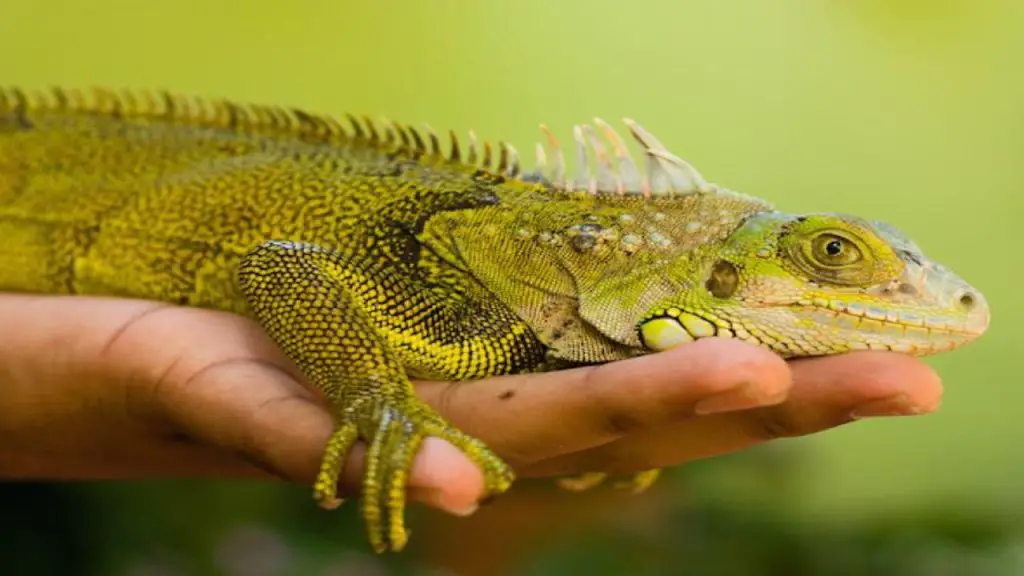A lizard is a type of reptile that belongs to the order Squamata. Lizards are cold-blooded animals, which means they are unable to regulate their body temperature and rely on the environment to do so.
They are known for their scaly skin, long tails, and four legs, which allow them to move quickly and gracefully. Lizards are found all over the world, from deserts and rainforests to grasslands and rocky hillsides.
Although lizards can be fascinating pets, taking care of one is quite different from caring for a dog or a cat. If you’re interested in having a reptilian friend as a pet, it’s crucial to learn how to properly care for a lizard and provide it with a safe home.
Their diets can vary significantly, as some lizards eat plants, others eat insects, and some are omnivores. Whether you’re a first-time lizard owner or an experienced reptile enthusiast, this guide will give you all the information you need to provide the best possible care for your scaly friend.
In this article, we will be exploring various aspects of lizard care, including habitat setup, feeding, maintaining appropriate temperature and humidity levels, as well as addressing common health issues and preventative measures.
So if you’re ready to learn how to take care of a lizard, read on.

1. How To Take Care Of A Lizard?
1.1 Provide a suitable habitat
Different species of lizards have different requirements when it comes to their living conditions. However, in general, most lizards need to live in a glass container called a “terrarium” that can be kept indoors.
The terrarium should have a heat lamp to keep the temperature warm enough for the lizard and a special light called a “UVB light” to provide them with the right light to stay healthy. The bottom of the terrarium should be covered with coconut fiber or reptile sand, which the lizard can walk on comfortably.
To ensure that your lizard is living in the best conditions possible, it’s important to research the specific needs of your particular lizard species. This will help you provide the right kind of environment for them to thrive in.
1.2 Maintaining Proper Temperature and Humidity for Your Lizard
Lizards are cold-blooded animals, which means they cannot regulate their body temperature internally as humans do. Instead, they rely on their environment to provide the right temperature for their bodies to function properly. As a result, it’s important to maintain the proper temperature and humidity levels in their habitat.
For most species of lizards, you’ll need to provide a “basking area” in the terrarium that’s warmer than the rest of the enclosure. This area should be heated with a heat lamp to a temperature of 90-100°F. This allows the lizard to raise its body temperature and digest its food properly.
The rest of the terrarium should be kept cooler, with a temperature of around 75-85°F. This provides a comfortable place for the lizard to rest when it’s not basking.
In addition to temperature, humidity is also important for lizards.
Most lizards require a humidity level of around 40-60%. You can maintain the proper humidity level by misting the terrarium with water and making sure that there is a water dish available for the lizard to drink from.
Again, it’s essential to research the specific needs of your lizard species to ensure that you’re providing the right temperature and humidity levels for their health and well-being.
1.3 What to Feed Your Lizard
Lizards are meat-eating animals and require a diet that includes live insects like crickets, mealworms, or roaches. Some species of lizards may also require small rodents or other types of prey. It’s important to provide a balanced diet that meets the specific dietary needs of your lizard species.
To ensure that your lizard is getting the proper nutrition, you’ll need to do some research on what types of food are appropriate for your particular species of lizard. This can involve consulting with a veterinarian who specializes in reptiles or doing some online research.
It’s a good idea to feed your lizard a variety of different types of insects, as well as other foods like fresh fruits and vegetables. You can also buy special lizard food from pet stores, which can be a convenient way to make sure that your lizard is getting all of the nutrients it needs.
It’s crucial to keep in mind that lizards have varying dietary requirements throughout their lifespan. To illustrate, juvenile lizards may necessitate a higher protein intake to facilitate their development.
As your lizard matures, its dietary demands might alter, hence it’s essential to carefully observe its diet and make modifications when needed.
1.4 Handle your lizard gently
Lizards can be sensitive creatures and may become stressed if they’re handled too roughly. To keep your lizard healthy and happy, then handle it with care and avoid sudden movements.
When picking up your lizard, it’s best to use a gentle touch and approach it slowly. You should also avoid grabbing the lizard by the tail, as this can cause it to become frightened and drop its tail as a defense mechanism. Instead, support the lizard’s body with your hands, being careful not to squeeze or apply too much pressure.
Remember that different species of lizards have different temperaments and may be more or less tolerant of being handled. Some lizards may become agitated or stressed when picked up, while others may be more relaxed and accustomed to human interaction.
It’s a good idea to approach your lizard calmly and slowly and to pay attention to its body language. If your lizard seems agitated or stressed when you try to handle it, give it some time alone and try again later.
With patience and care, you can establish a positive relationship with your lizard and enjoy spending time with it.
1.5 Provide mental stimulation
Lizards, like other animals, can become bored if they don’t have enough mental stimulation or opportunities for play. To keep your lizard entertained and engaged, you should provide them with various forms of mental stimulation.
One way to provide mental stimulation for your lizard is to create an environment that offers hiding places and climbing structures. This can include rocks, branches, or other objects that your lizard can climb on or hide behind.
Another way to provide mental stimulation is to introduce your lizard to different types of food or toys. You can place food in different locations in their habitat or give them toys to play with, such as balls or small plastic items.
Remember that lizards have different personalities and preferences, so what works for one lizard may not work for another. You can experiment with different forms of enrichment to see what your lizard likes and dislikes.
2. Common Health Issues in Lizards and How to Prevent Them
Below we have discussed some typical health issues that lizards may encounter, along with preventative measures that can be taken to avoid them.
One of the most common health issues in lizards is a respiratory infection, which can be caused by a variety of factors such as poor hygiene or exposure to cold temperatures. To prevent respiratory infections, you should ensure your lizard’s habitat is clean and well-maintained, with appropriate temperature and humidity levels.
Another common health issue in lizards is metabolic bone disease, which can result from a lack of calcium or vitamin D in their diet. To prevent this, it’s important to provide a balanced diet that includes calcium and vitamin D supplements as necessary.
Lizards may also be prone to parasitic infections, such as mites or ticks. To prevent these infections, you should regularly inspect your lizard for any signs of infestation and maintain a clean and hygienic habitat.
In addition to these common health issues, lizards may also experience other conditions such as skin infections, digestive problems, or injury. If you observe any unusual behavior or symptoms in your lizard, it’s crucial to seek advice from a veterinarian who has expertise in treating reptiles.
Prevention is always the best approach to keep your lizard healthy. You can reduce the risk of health issues by providing suitable habitats, maintaining appropriate temperature and humidity levels, providing a balanced diet, and regularly cleaning and inspecting your lizard’s habitat.
Conclusion
In this article, we have provided how to take care of your pet lizard. It talks about setting up a good home for them, feeding them the right food, and keeping them warm and moist, also we have discussed their common health issues and how to prevent them.
We hope that you find the tips and information provided helpful in ensuring that your lizard stays healthy and happy. If you have any questions or concerns, please feel free to leave a comment below.
FAQ’s
How to take care of lizard eggs?
To take care of lizard eggs, you need to ensure that they are incubated at a specific temperature and humidity level suitable for the species you are caring for. You should create a safe and proper environment for the eggs by setting up a separate incubation chamber, providing an appropriate substrate, and ensuring good ventilation.
Avoid handling the eggs as they are delicate and any disturbance can harm the embryo inside. Check the eggs regularly for any abnormalities and address them immediately.
Once the eggs start to hatch, set up a safe enclosure for the hatchlings with an appropriate substrate, heat, and lighting. Seek advice from a reptile expert or veterinarian if you are unsure about caring for the eggs.
Additional Posts:



